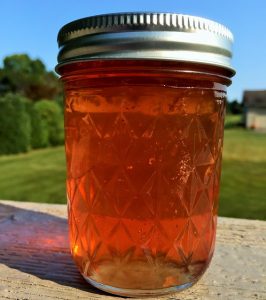 Making jams and jellies was one of my favorite memories as a child. Our family would travel to places that allowed us to pick our fruit. Nowadays I either grow my own fruit or find a local farmers’ market to purchase fresh picked fruit to make jams that can be enjoyed throughout the fall, winter, and spring until the next harvest season.
Making jams and jellies was one of my favorite memories as a child. Our family would travel to places that allowed us to pick our fruit. Nowadays I either grow my own fruit or find a local farmers’ market to purchase fresh picked fruit to make jams that can be enjoyed throughout the fall, winter, and spring until the next harvest season.
Basic Kinds of Fruit Spreads
There are six types of fruit spreads. Jellies, jams, preserves, conserves, and marmalade’s are jellied or thickened fruit products. The individual characteristics are dependent on the fruit, methods of preparing the fruit and the proportions of the ingredients.
-
- Jellies
- Made from juices strained from fruit
- Clear and firm
- Holds shape when cut but not tough
- Jams
- Crushed or chopped fruit
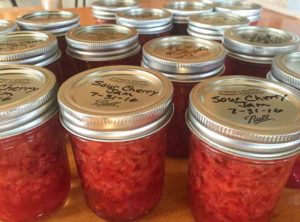
- Holds shape, yet spreadable
- Less firm than jellies
- Crushed or chopped fruit
- Preserves
- Contain small, whole fruit or uniform pieces
- Clear, slightly jellied syrup
- Marmalades
- Soft jellies with small pieces of fruit evenly suspended
- Often contains citrus fruit
- Conserves
- Jam-like spread
- Combination of fruits
- May contain nuts and/or raisins
- Butters
- Fruit pulp combined with sugar and spices
- Cooked to a consistency that will spread easily
- Thick enough to round up on a spoon
- Jellies
Ingredients
There are four ingredients that are common in most fruit spreads. These ingredients are fruit, pectin, sugar, and acid.
- Fruit
- Look for ripe, fresh fruit for best color and flavor.
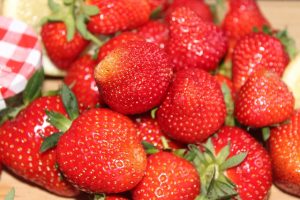
- Look for ripe, fresh fruit for best color and flavor.
- Pectin
- Pectin causes the fruit to gel.
- Some fruits like apples, lemon, blackberries contain natural pectin to make their own gel.
- Commercial pectin can be made from apples or citrus fruit. Follow the recipe for the pectin type you are using such as regular, low/no sugar or instant.
- Sugar
- Sugar is as important as fruit in jams and jellies for preservation and to prevent growth of some microorganisms.
- Proper proportion is needed with pectin and acid to make a good product.
- To reduce the sugar or use a sugar substitute, follow tested recipes that are designed to use low/no sugar or a sugar substitute.
- Acid
- Acid is needed for the gel formation and flavor.
- The acid content varies among fruits.
- Typically bottled lemon juice is added to increase the acid in some recipes.
- Vinegar’s may be called for in pepper or onion jellies.
Making Jams and Jellies
There are twelve basic steps to making jams, jellies, or other fruit spreads.
Planning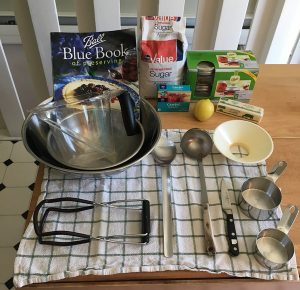
- Select and read through the tested recipe and instructions. Below are some sites for tested recipes.
- National Center for Home Food Preservation
- Preserve Smart
- Contact your local CSU Extension Office
- Select fresh ingredients.
- Plan Time
- Assemble the equipment
Preparing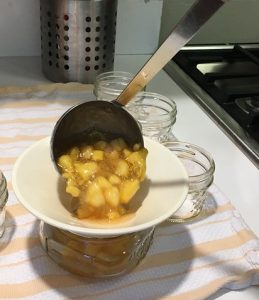
- Prepare the water bath canner.
- Prepare the jars and lids.
- Inspect for defects
- Wash, rinse and sterilize if needed.
- Keep the jars warm.
- Prepare the jellied product following the tested recipe.
- Filling the jars
- Leave the headspace required by the recipe. Typically, ¼ inch.
- Remove any air bubbles with a bubble freer.
- Wipe the rim and threads of the jar with a clean damp cloth or paper towel.
- Apply the lid and ring band.
Processing and Storage
- Process the jam, jelly, or fruit product

- Place the jars in the water bath canner.
- Make sure that water covers the jars by 1 to 2 inches. Add more boiling water if needed.
- Place lid on the canner and bring to a full rolling boil.
- Set timer and begin processing for the time called in the recipe plus any elevation adjustment.
- After processing the recommended time plus an elevation time adjustment
- Turn of the heat, remove the lid and wait 5 minutes before removing the jars.
- Remove jars from the canner using a jar lifter. Be sure to keep jars upright.
- Cooling the Jars
- Set the jars upright on a towel or cooling rack to prevent jar breakage.
- Leave 1 inch of space around each jar.
- Jars need to be left undisturbed for 12 to 24 hours.
- Do not re-tighten bands.
- Let water evaporate off the lids naturally.
- Check for seal
- After 12 to 24 hours, check the lids for seal by pressing the middle of the lid. If one or two jars do not seal, refrigerate and use first.
- Storage
- Remove ring bands
- Clean the jars.
- Label the jars with contents, method, and date canned.
- Store in a cool, dry, dark place.
- Use within 1 year.
Canning jams and jellies can be easy and there are many great tested recipes that can make this a fun family bonding time. Call or visit your nearest CSU Extension office for assistance with home food preservation questions.


Oh, I call everything “jam or jelly” — guess i need to learn the other types of fruit spreads and broaden my range at bit!!
Great blog! Thanks for sharing so much info and motivating me to try something new.
Thanks for including photos in your blog!